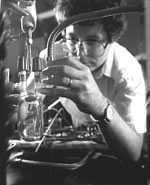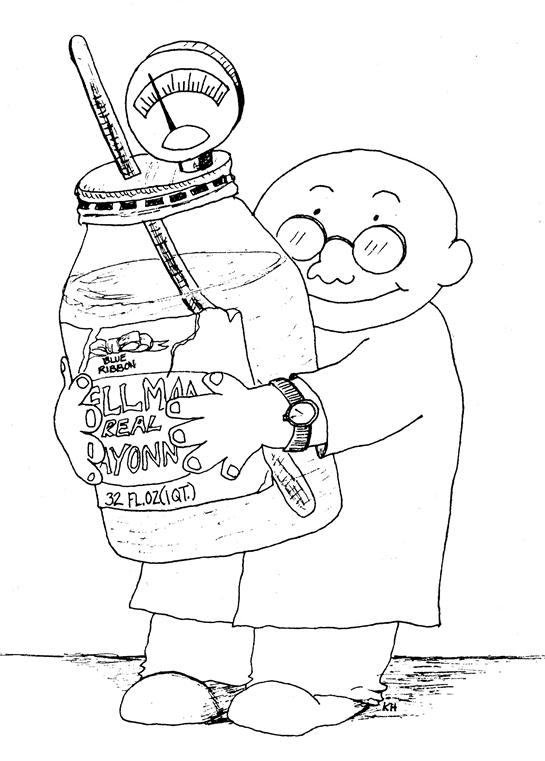Vapor-liquid equilibria of alcohol-hydrocarbon mixtures
In these studies, vapor-liquid equilibria of binary and ternary systems comprised of alcohols and hydrocarbons were examined. Work consisted of obtaining new experimental data, developing new data reduction models and developing new solution models that account both for self and cross association of the alcohol species using the infinite equilibria model.
To show an example of theoretical work, here is a link to the first page of an article that extends the infinite equilibria model to mixtures of any number of associating species.
To illustrate the experimental measurements, here is a link to the first page of an article that describes VLE measurements for heptane with all of the isomers of pentane.

VLE Apparatus, 1992
Vapor-liquid equilibria in other associated systems
Here, systems in which species associate or form complexes with other species were examined - for instance the acetone-chloroform-toluene and the chloroform-acetone-methyl ethyl ketone ternary systems. The binary systems were represented by a monomer-dimer association model in which structures reported in the literature are incorporated. Prediction of the ternary data was excellent and required no additional information beyond that obtained from the binary systems. Here is a link to the first page of an article that reports data for chloroform-acetone-methyl ethyl ketone.

Vapor-liquid equilibria of systems comprised of electrolytes in mixed solvents
The systems under examination in this study are comprised of a single nonvolatile electrolyte in a mixed solvent. The first part of the project involved using literature data to show the feasibility of obtaining future data via the total pressure method. The second part of the project involved obtaining vapor-liquid equilibrium data for ternary mixtures and developing solution models for their prediction and representation. Here is a link to the first page of an article in which we report VLE data for copper chloride in mixtures of methanol and ethanol.
Phase equilibria of polymer-solvent mixtures
Here, a quartz crystal apparatus is used to measure sorption of solvent vapors in a polymer film coated on the crystal surface. The apparatus is used to measure solvent activities in the solvent-polymer mixtures in the range of approximately 10 to 30 weight percent of solvent. This project is in collaboration with V. R. Bhethanabotla, Chair of Chemical & Biomedical Engineering at USF.
Here is a link to the first page of an article in which activities are reported for several different polar and non-polar solvents in co-polymers of poly (methly methacrylate) and poly (ethyl methacrylate).
Scott W. Campbell, Professor Chemical & Biomedical Engineering ENB 118 University of South Florida Tampa, FL 33620
campbell@usf.edu
(813) 974-3907
Physical Office Location: ENC 3405
